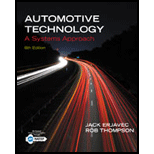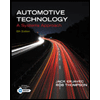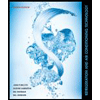
Automotive Technology: A Systems Approach (MindTap Course List)
6th Edition
ISBN: 9781133612315
Author: Jack Erjavec, Rob Thompson
Publisher: Cengage Learning
expand_more
expand_more
format_list_bulleted
Concept explainers
Textbook Question
Chapter 36, Problem 3RQ
What makes up the propulsion system in a BEV?
Expert Solution & Answer
Trending nowThis is a popular solution!

Students have asked these similar questions
What is Power Transmission Belt?
How to connect the sterilizer in the drone to the aircraft's control panel?
Discuss briefly the various types of belts used for the transmission of power.
Chapter 36 Solutions
Automotive Technology: A Systems Approach (MindTap Course List)
Ch. 36 - Why are carbon dioxide emissions a concern?Ch. 36 - List five things a driver of a BEV can do to...Ch. 36 - What makes up the propulsion system in a BEV?Ch. 36 - What basic factors affect the required time to...Ch. 36 - There are two basic ways a BEV is connected to an...Ch. 36 - Explain what the ratings of kilowatts and kilowatt...Ch. 36 - True or False? All fuel cell vehicles have...Ch. 36 - Which of the statements about hydrogen is true? a....Ch. 36 - True or False? A PEM fuel cell needs to operate at...Ch. 36 - Why is water control so important to the...
Ch. 36 - Which of the following CANNOT be used as a source...Ch. 36 - Which of the following statements about fuel cells...Ch. 36 - What is the basic fuel for a fuel cell? a....Ch. 36 - The component that changes the molecular structure...Ch. 36 - Which of the following statements about hydrogen...Ch. 36 - Technician A says power is the ability to do work....Ch. 36 - While discussing inductive charging: Technician A...Ch. 36 - Technician A says some BEVs use liquid to heat the...Ch. 36 - While discussing charger connections: Technician A...Ch. 36 - Technician A says that a fuel cell produces...Ch. 36 - While diagnosing the control system of a BEV:...Ch. 36 - Prob. 7ASRQCh. 36 - Technician A says that all FCEVs have regenerative...Ch. 36 - Technician A says that gasoline can be used as a...Ch. 36 - While discussing hydrogen: Technician A says that...
Knowledge Booster
Learn more about
Need a deep-dive on the concept behind this application? Look no further. Learn more about this topic, mechanical-engineering and related others by exploring similar questions and additional content below.Similar questions
arrow_back_ios
SEE MORE QUESTIONS
arrow_forward_ios
Recommended textbooks for you
 Automotive Technology: A Systems Approach (MindTa...Mechanical EngineeringISBN:9781133612315Author:Jack Erjavec, Rob ThompsonPublisher:Cengage Learning
Automotive Technology: A Systems Approach (MindTa...Mechanical EngineeringISBN:9781133612315Author:Jack Erjavec, Rob ThompsonPublisher:Cengage Learning Refrigeration and Air Conditioning Technology (Mi...Mechanical EngineeringISBN:9781305578296Author:John Tomczyk, Eugene Silberstein, Bill Whitman, Bill JohnsonPublisher:Cengage Learning
Refrigeration and Air Conditioning Technology (Mi...Mechanical EngineeringISBN:9781305578296Author:John Tomczyk, Eugene Silberstein, Bill Whitman, Bill JohnsonPublisher:Cengage Learning Automotive TechnologyMechanical EngineeringISBN:9781337794213Author:ERJAVEC, Jack.Publisher:Cengage,
Automotive TechnologyMechanical EngineeringISBN:9781337794213Author:ERJAVEC, Jack.Publisher:Cengage,

Automotive Technology: A Systems Approach (MindTa...
Mechanical Engineering
ISBN:9781133612315
Author:Jack Erjavec, Rob Thompson
Publisher:Cengage Learning

Refrigeration and Air Conditioning Technology (Mi...
Mechanical Engineering
ISBN:9781305578296
Author:John Tomczyk, Eugene Silberstein, Bill Whitman, Bill Johnson
Publisher:Cengage Learning

Automotive Technology
Mechanical Engineering
ISBN:9781337794213
Author:ERJAVEC, Jack.
Publisher:Cengage,
Fluid Mechanics - Viscosity and Shear Strain Rate in 9 Minutes!; Author: Less Boring Lectures;https://www.youtube.com/watch?v=_0aaRDAdPTY;License: Standard youtube license